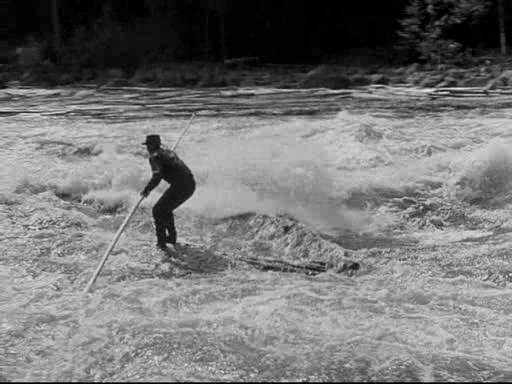(Parker 2013) South Park: Ep.240 — World War Zimmerman
(Stanton 2012) John Carter
(Pink 1962) Journey To The Seventh Planet
(Clark 1979) Angels’ Revenge [aka Angels’ Brigade] [Mystery Science Theatre version]
(Silberston 1998) MidSomer Murders: Ep.2 — Written In Blood
(Claxton 1979) Night of the Lepus
(Hawks 1949) I Was a Male War Bride Read more »
Category Archives: DI - Viewing 2013
FILMS – DECEMBER 2013
FILMS – NOVEMBER 2013
(Gordon 1955) It Came From Beneath the Sea
(Dertano 1951) Racket Girls [Mystery Science Theatre version]
(Madern & Chaplin 1914) Twenty Minutes of Love
(Sennett 1914) The Fatal Mallet
(Stevens 1956) Alfred Hitchcock Presents: Ep.39 — Momentum
(Rawlins 1942) Sherlock Holmes and the Voice of Terror Read more »
(Barker 1914) The Wrath of the Gods
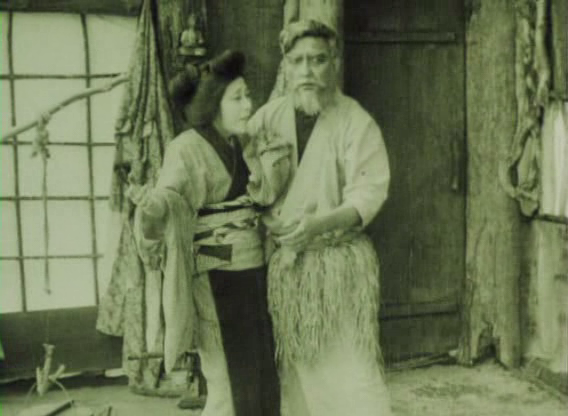 While he is best known for his role as the Japanese camp commander in The Bridge on the River Kwai, and other films of the 1950s, Sessue Hayakawa was a superstar in the silent era. Among Hollywood’s highest payed stars, he was in the same league with Fairbanks, Chaplin and Valentino. He founded his own production company because he resented the misrepresentation of Asians in Hollywood films. A meticulous actor, he was highly influential in transforming film acting methods from the broad gestures inherited from stage acting to the more restrained techniques appropriate to film. This film, the second one in which he appeared, was a story with a Japanese setting. A castaway sailor courts a young girl who has been forbidden to marry by a temple prophecy. Hayakawa was a young man, having just dropped out of the University of Chicago, where he studied economics, but he appears in heavy makeup as the heroine’s elderly father. The film displays the older, melodramatic style of acting that Hayakawa was soon to change. The leading female role was played by Tsuru Aoki, whom Hayakawa fell in love with and married during the production. Despite the dated acting techniques, the film holds up well, with some exciting action scenes at sea, and some moving moments.
While he is best known for his role as the Japanese camp commander in The Bridge on the River Kwai, and other films of the 1950s, Sessue Hayakawa was a superstar in the silent era. Among Hollywood’s highest payed stars, he was in the same league with Fairbanks, Chaplin and Valentino. He founded his own production company because he resented the misrepresentation of Asians in Hollywood films. A meticulous actor, he was highly influential in transforming film acting methods from the broad gestures inherited from stage acting to the more restrained techniques appropriate to film. This film, the second one in which he appeared, was a story with a Japanese setting. A castaway sailor courts a young girl who has been forbidden to marry by a temple prophecy. Hayakawa was a young man, having just dropped out of the University of Chicago, where he studied economics, but he appears in heavy makeup as the heroine’s elderly father. The film displays the older, melodramatic style of acting that Hayakawa was soon to change. The leading female role was played by Tsuru Aoki, whom Hayakawa fell in love with and married during the production. Despite the dated acting techniques, the film holds up well, with some exciting action scenes at sea, and some moving moments.
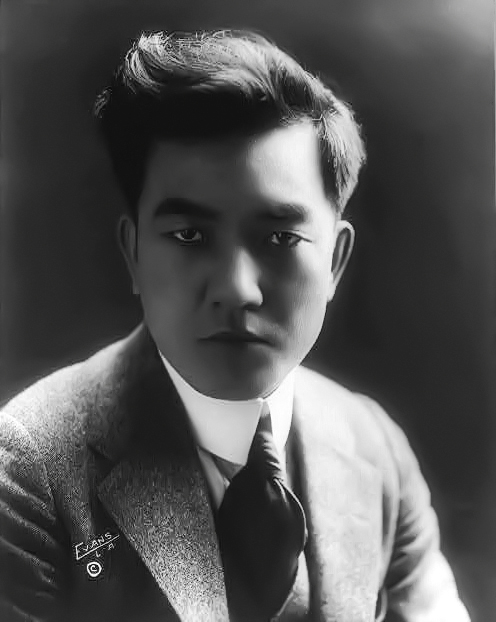
Hayakawa in 1918, four years after this film was made.
Hayakawa led an interesting life. As a teenager in Japan, he attempted seppuku after failing to qualify for the naval career his upper class family had planned for him. He played quarterback in American college football. He stumbled into acting by accident while waiting for a ship home, rocketing to stardom with his good looks. He made fortunes and lost them gambling, lived extravagantly, and became a social lion by buying up a huge stock of liquor just before Prohibition was enacted. He wrote several plays and a novel. He produced a version of The Three Musketeers in Japan. For awhile, broke and out of work, he supported himself by painting watercolours. He moved to France to make films in which he would not be racially stereotyped — and ended up fighting in the French Resistance. As an middle-aged man, he was able to take on a crowd of young Mexican toughs in a brawl and defeat them handily. He retired to become a Zen master and tutor. Some of his roles won him accolades as a mature actor, but he was never popular in Japan, where he was considered “too American.”
- .
Asian actors in Hollywood faced complex challenges, performing in the limelight of a society that held bizarre and sometimes disgusting attitudes about race and ethnicity. In the 1920’s, America’s anti-miscegenation laws influenced all casting, script-writing and performance. In the 1930’s the rise of anti-Japanese sentiments and the pervasive censorship of films did further damage. To weave their way through these obstacles, Asians had to be resourceful and strong. Their achievements should not be forgotten.
FILMS – OCTOBER 2013
(Klimov 1965) Welcome, or No Trespassing [Добро пожаловать, или Посторонним
. . . вход воспрещён]
(Honda 1958) The H‑Man
(Addiss 1956) Alfred Hitchcock Presents: Ep.21 ― Safe Conduct
(Baker 1967) Quatermass and the Pit [Hammer version] Read more »
FILMS – SEPTEMBER 2013
(1900) Sherlock Holmes Baffled
(Kostanski 2011) Manborg
(Groening & Sandoval 2012) Futurama: Ep.106 ― Fun on a Bun
(Krishna DK & Nidimoru 2013) Go Goa Gone
(Attenborough 1977) A Bridge Too Far Read more »
FILMS – AUGUST 2013
(Lawrence 1958) The Crawling Eye [Mystery Science Theatre version]
(Lester 1980) Superman 2
(Florea 1976) The Astral Factor
(Tulio 1938) The Song of the Scarlet Flower [Laulu tulipunaisesta kukasta]
(Goldstein 2000) 2001: A Space Travesty Read more »
(Tulio 1938) The Song of the Scarlet Flower [Laulu tulipunaisesta kukasta]
Before the process was mechanized, the logs taken from the great forests of northeastern North America were cut in winter, then dragged by horse teams to the shores of rivers. This method is still used in Nova Scotia to safeguard some environmentally sensitive forests, since it is far less destructive and more sustainable than clear-cutting. When the spring thaw came, the logs were driven down the rivers in great masses. Left to themselves, the logs would jam, and millions of board feet of lumber could back up for miles. So the logs had to be carefully herded down the rivers, like cattle. That’s why professional log drivers were needed. No cowboy ever worked a job as difficult and dangerous as the log driver. He danced across the floating logs on foot, balancing himself with his pike pole, skipping from bateau to rolling log, to rock, to log jam, like a ballet dancer. The job required a sort of instinctive grasp of physics, magical dexterity, and superhuman strength. The log driver is a standard character in Canadian folklore, celebrated in murals, currency, stamps, and in the classic folksong The Log Driver’s Waltz (because of his nimble footwork, “a log driver’s waltz pleases girls completely”). The French-Irish-Ojibway Canadians who dominated this profession faced little competition from anyone else. Not surprisingly, the key technical terms of the trade were either French or Ojibway (e.g. “wannigan”, the floating supply shack on a timber raft, from Ojibway wannikan originally meaning “storage pit”). But one group of immigrants to Canada did make their mark in this profession: the Finns. The Finns in North-western Ontario were not just bush lumberjacks. They boasted log drivers as skillful as their older Canadian rivals on the Saguenay and Ottawa drives.
Which brings me, in a roundabout way, to this film. The reason that Finns could be competitive log drivers in Canada is that the identical profession existed in Finland*, and it is the subject of the oldest Finnish motion picture in my film collection, Laulu tulipunaisesta kukasta (1938) [“The Song of the Scarlet Flower”]. It is not a cinematic masterpiece. The acting is melodramatic, the cutting sometimes awkward, and much of it feels more like a silent film of twenty years before. But it’s director, Teuvo Tulio, had great talent. The film’s enthusiasm and sincerity make up for what it lacks in sophistication. The story is based on a novel by Johannes Linnankoski, and follows the life of a young man who skips from girl to girl as easily as he skips from log to log, until his sinfulness catches up to him and forces him into spiritual redemption. All very pietist. A French Canadian version of this story wouldn’t bother with the redemption part, or for that matter see where there was any “sin” to redeem. I haven’t read the novel, so I don’t know if it is a faithful adaptation, or what elements are Tulio’s rather than Linnankoski’s. The book had already been filmed twice in a 1919 silent version, and in Swedish by Per-Axel Branner in 1934. It would be remade yet again in 1956. I don’t think any of these versions found an audience outside of Finland and Scandinavia. 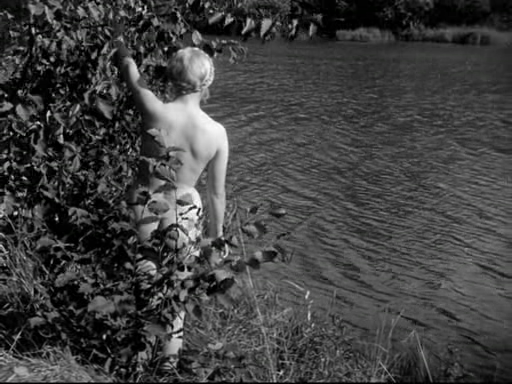
As always with old films, I watch partly just to see visual details of the past and other places. The film gives no hint of the devastating war that Finland would have thrust upon it only a year after its release. The country people play a rather strange version of the game of “tag”. The interiors of the squared log houses are spartan, but nevertheless already display the Finnish knack for fluid design. The kitchens look particularly nice. And, in a wild river landscape indistinguishable from frontier Quebec or Ontario, the log drive flows under one of those super-modern bridges that Finns were building in the 1930’s. The effect is disconcerting, as if someone had crudely photo-shopped the film with a modern snap.
The love scenes are far more sensuous than anything that would have been permitted in American cinema in 1938. There is an absolutely delightful nude scene. But the best parts of the film are the log driving scenes, which are both genuinely exciting and technically accurate.
———
— - — *searching for information on the subject, I came across this quote from Finnish film-maker Markku Varjola: “In the Finnish consciousness the logger occupies the role of the cowboy from the American heritage. He has represented adventure, freedom and independence, constantly moving true man, a vanishing breed.”, a sentiment that could just as easily have been written in Canada.
FILMS – JULY 2013
(Jackson 2001) The Lord of the Rings: The Fellowship of the Ring [theatrical version]
(MacGillivray 2006) Greece: Secrets of the Past [IMAX film]
(Graves 2013) Game of Thrones: Ep.24 ― And Now His Watch Is Ended
(Marshall 1939) You Can’t Cheat an Honest Man Read more »
FILMS – JUNE 2013
(Winchcombe 2012) Orkney’s Stone Age Temple
(Griffith 1909) A Corner in Wheat
(Castle 1963) Zotz!
(Cline 1941) Never Give a Sucker an Even Break Read more »
Raumpatrouille [Space Patrol Orion]
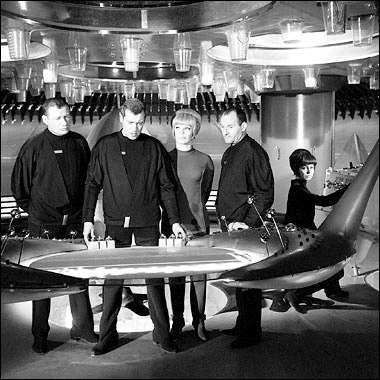 Raumpatrouille – Die phantastischen Abenteuer des Raumschiffes Orion [known in English as Space Patrol Orion] was a German science fiction series that premiered the same week that Star Trek did in North America. It had a similar premise — an ensemble drama in which the crew of a space service met up with various alien perils. Star Trek was not to be broadcast in Germany for several years to come, and there is no indication that either production was aware of the other, but there are a number of remarkable similarities. In both cases, there was an international crew and a future in which humanity is politically unified, at peace, and exploring space. Read more »
Raumpatrouille – Die phantastischen Abenteuer des Raumschiffes Orion [known in English as Space Patrol Orion] was a German science fiction series that premiered the same week that Star Trek did in North America. It had a similar premise — an ensemble drama in which the crew of a space service met up with various alien perils. Star Trek was not to be broadcast in Germany for several years to come, and there is no indication that either production was aware of the other, but there are a number of remarkable similarities. In both cases, there was an international crew and a future in which humanity is politically unified, at peace, and exploring space. Read more »
